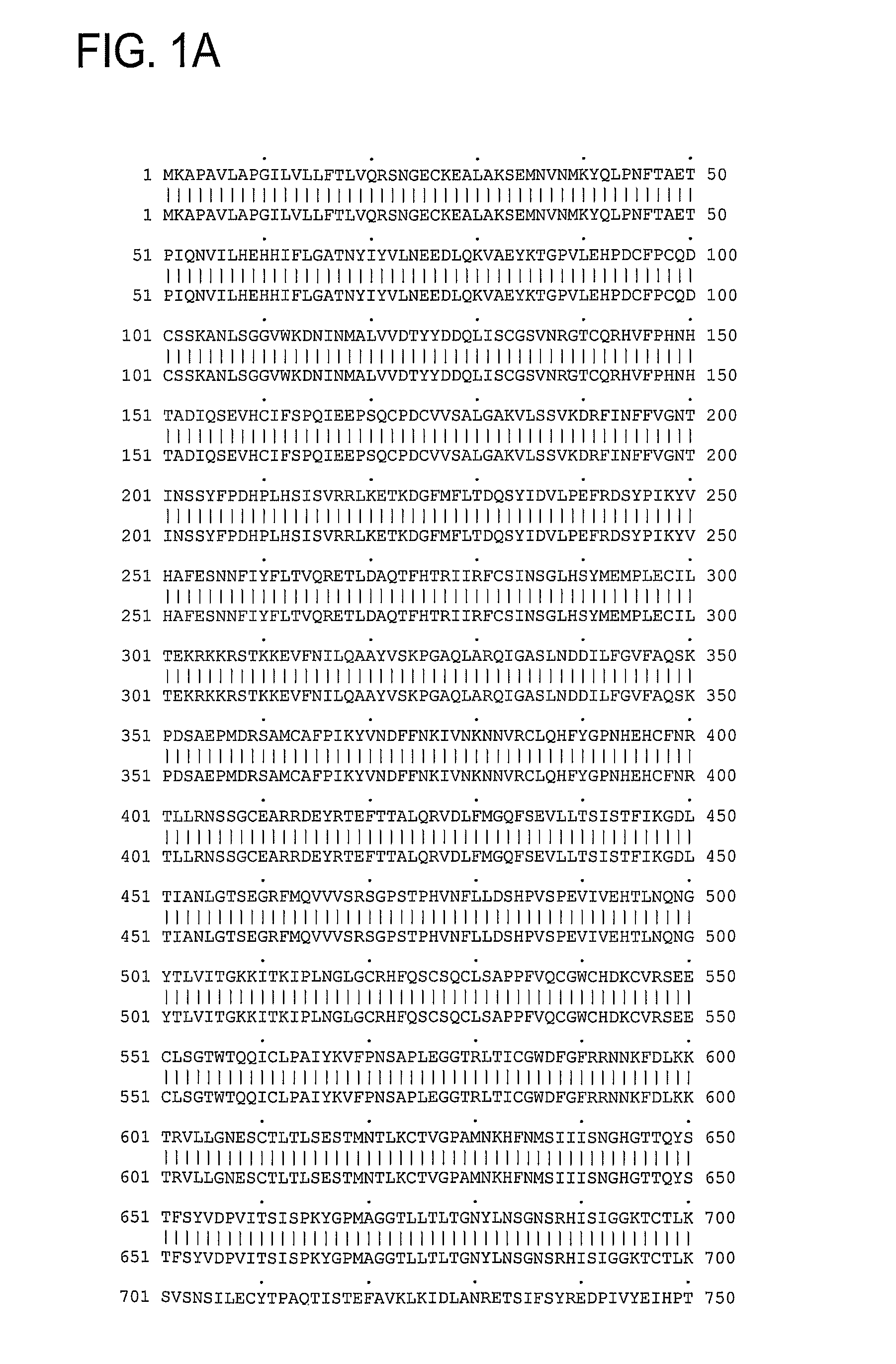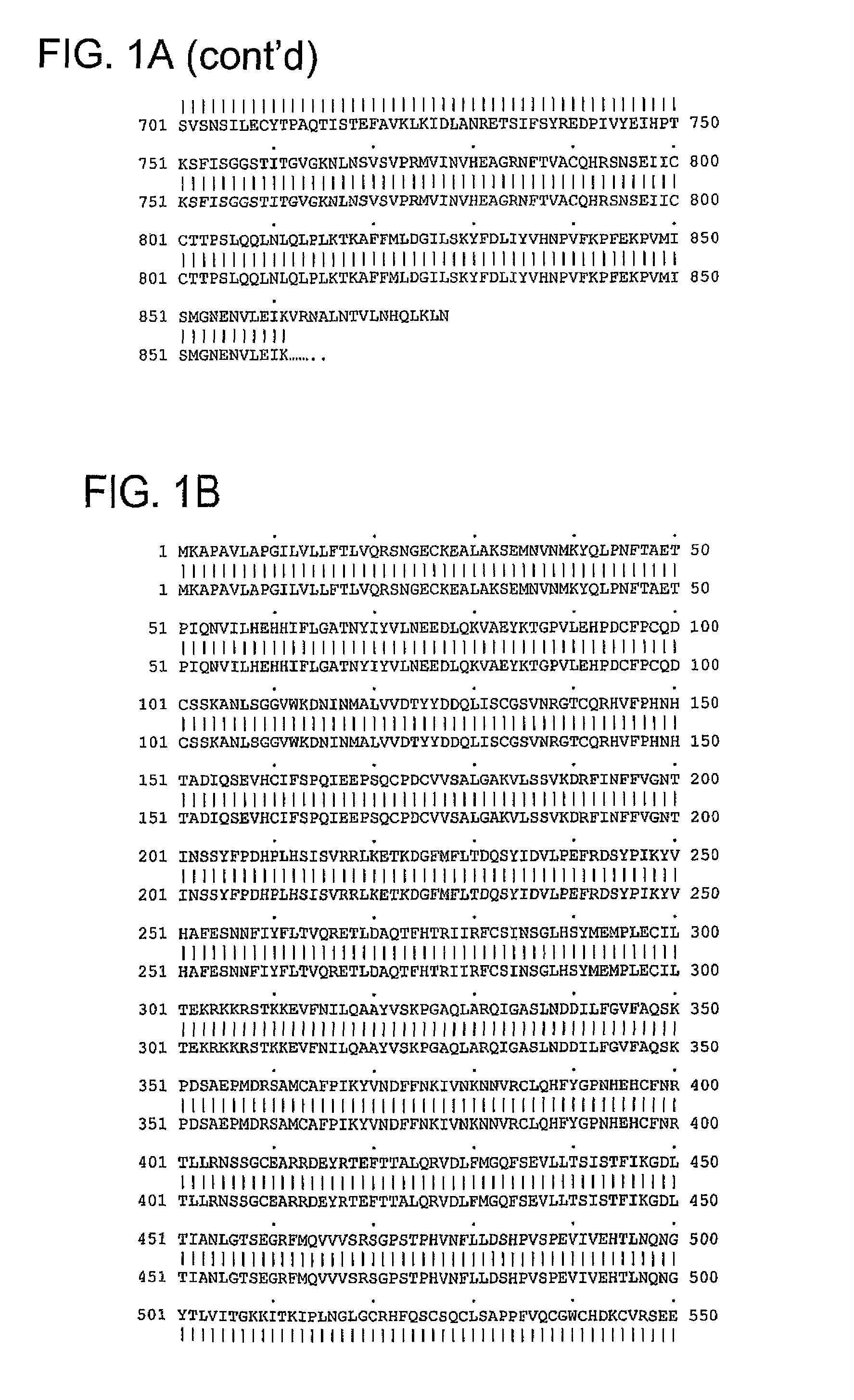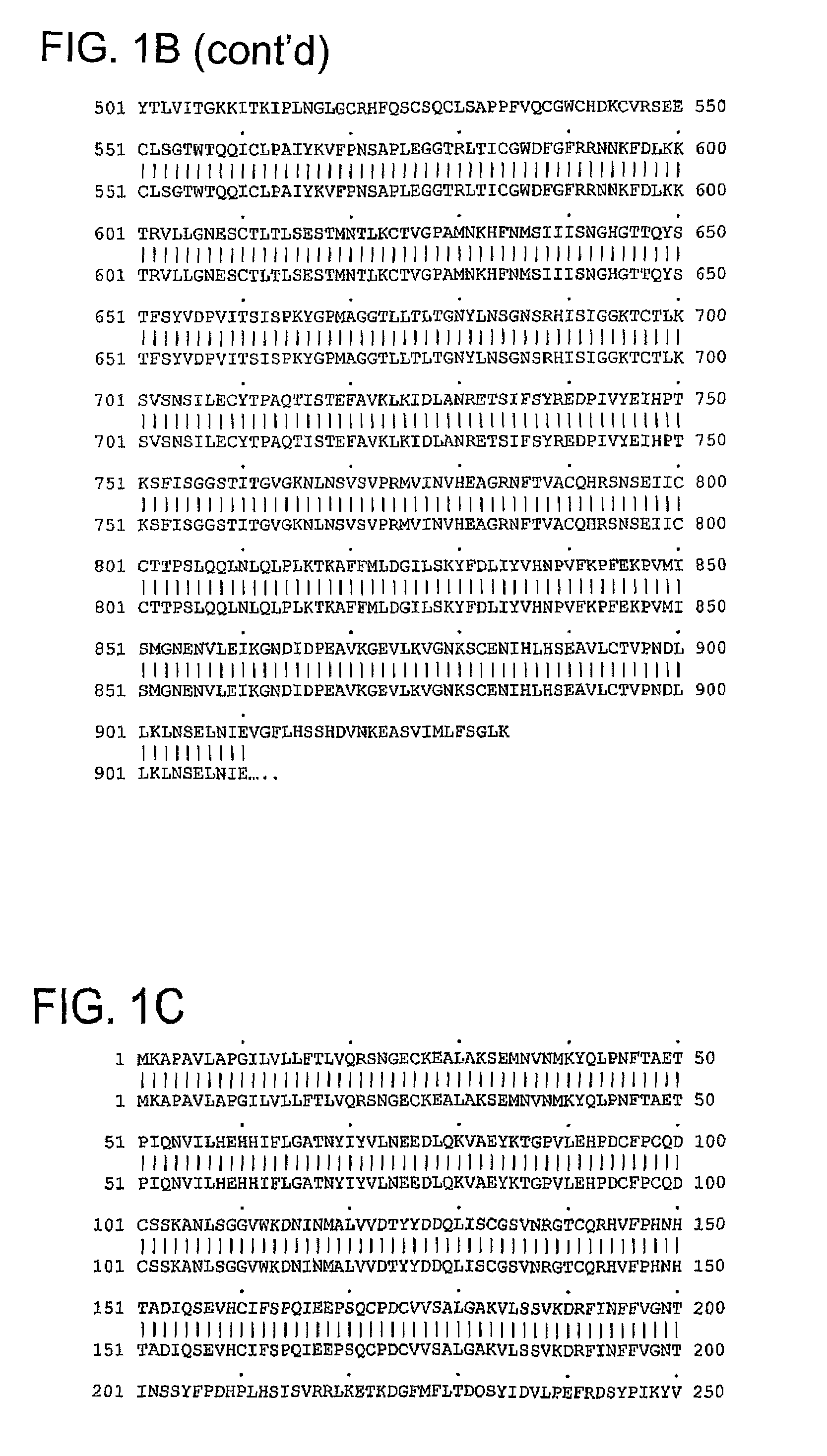Hepatocyte growth factor receptor splice variants and methods of using same
a growth factor receptor and hepatocyte technology, applied in the direction of growth factor/regulator receptors, carrier-bound/immobilised peptides, botany apparatus and processes, etc., can solve the problems of blocking met activation and signaling pathway, and achieve enhanced affinity, enhanced inhibitory and/or therapeutic effect, and improved pharmacokinetics properties
- Summary
- Abstract
- Description
- Claims
- Application Information
AI Technical Summary
Benefits of technology
Problems solved by technology
Method used
Image
Examples
example 1
Description for MET Clusters HSU08818 and Z40018
[0334]Cluster HSU08818 features 3 transcripts HSU08818_PEA—1_T9 (SEQ ID NO:1); HSU08818_PEA—1_T14 (SEQ ID NO:2); HSU08818_PEA—1_T15 (SEQ ID NO:3) and 30 segments of interest, the names for which are given in Table 1. The selected protein variants are given in Table 2.
[0335]Cluster Z40018 features 1 transcript Z40018—1_T15 (SEQ ID NO:48), encoding the selected protein Z40018—1_P17 (SEQ ID NO:66), and 15 segments of interest, the names for which are given in Table 3.
[0336]These sequences are variants of the known protein Hepatocyte growth factor receptor precursor (SEQ ID NO:34) (SwissProt accession identifier MET_HUMAN; known also according to the synonyms EC 2.7.1.112; Met proto-oncogene tyrosine kinase; c-met; HGF receptor; HGF-SF receptor, Met receptor protein tyrosine kinase), referred to herein as the previously known protein.
[0337]
TABLE 1Segments of interestSegment NameHSU08818_PEA_1_node_0 (SEQ ID NO:4)HSU08818_PEA_1_node_4 (SEQ ...
example 2
Met-934 Variant Transcript Validation, Cloning, Protein Production and Purification
[0410]This Example describes cloning of Met-934 variant (SEQ ID NO:2) in baculovirus and in mammalian expression systems. Different expression systems were used to check expression efficiency, amount of expressed proteins produced and also to characterize the expressed proteins.
Full Length Validation of Met-934:
[0411]mRNA from the ES2 cell line was isolated and treated with DNAse I, followed by reverse transcription using random hexamer primer mix and Superscript™.
[0412]The Met-934 variant (SEQ ID NO:2) was validated by RT-PCR amplification using Expand High Fidelity PCR System (Roche #3300242) under the following conditions: 2.5 μl—×10 buffer; 5 μl—cDNA; 2 μl—dNTPs (2.5 mM each); 0.5 μl—DNA polymerase; 14 μl—H2O; and 0.5 μl—of each primer (25 μM) in a total reaction volume of 25 μl;
[0413]Primers including Met-934 splice variant specific sequences are listed in Table 24 below.
[0414]
TABLE 24Primer ID:S...
example 3
Met-877 Variant Transcript Validation, Cloning, Protein Production and Purification
Validation of Met-877 Variant Transcript (SEQ ID NO:3)
[0440]Met-877 transcript (SEQ ID NO:3) was validated using a unique tail reverse primer (primer sequences are given in Table 26). The existence of the transcript was checked in the following tissues: colon, lung, ovary and breast, as demonstrated in FIG. 11. FIG. 11 shows the PCR results of Met-877 variant (SEQ ID NO:45). Lanes 1-3 represent cDNA prepared from RNA extracted from colon cell lines, as follows: lane 1—caco; lane 2—CG22; lane 3—CG224; lane 4 represents cDNA prepared from RNA extracted from lung cell line H1299; lane 5 represents cDNA prepared from RNA extracted from ovary cell line ES2, lane 6 represents cDNA prepared from RNA extracted from breast cell line MCF7; lane 7 represents cDNA prepared from RNA extracted from lung tissue A609163, Biochain; lanes 8-9 represent cDNA prepared from RNA extracted from breast tissues A605151 and A6...
PUM
| Property | Measurement | Unit |
|---|---|---|
| concentrations | aaaaa | aaaaa |
| concentration | aaaaa | aaaaa |
| melting temperatures | aaaaa | aaaaa |
Abstract
Description
Claims
Application Information
 Login to View More
Login to View More - R&D
- Intellectual Property
- Life Sciences
- Materials
- Tech Scout
- Unparalleled Data Quality
- Higher Quality Content
- 60% Fewer Hallucinations
Browse by: Latest US Patents, China's latest patents, Technical Efficacy Thesaurus, Application Domain, Technology Topic, Popular Technical Reports.
© 2025 PatSnap. All rights reserved.Legal|Privacy policy|Modern Slavery Act Transparency Statement|Sitemap|About US| Contact US: help@patsnap.com



